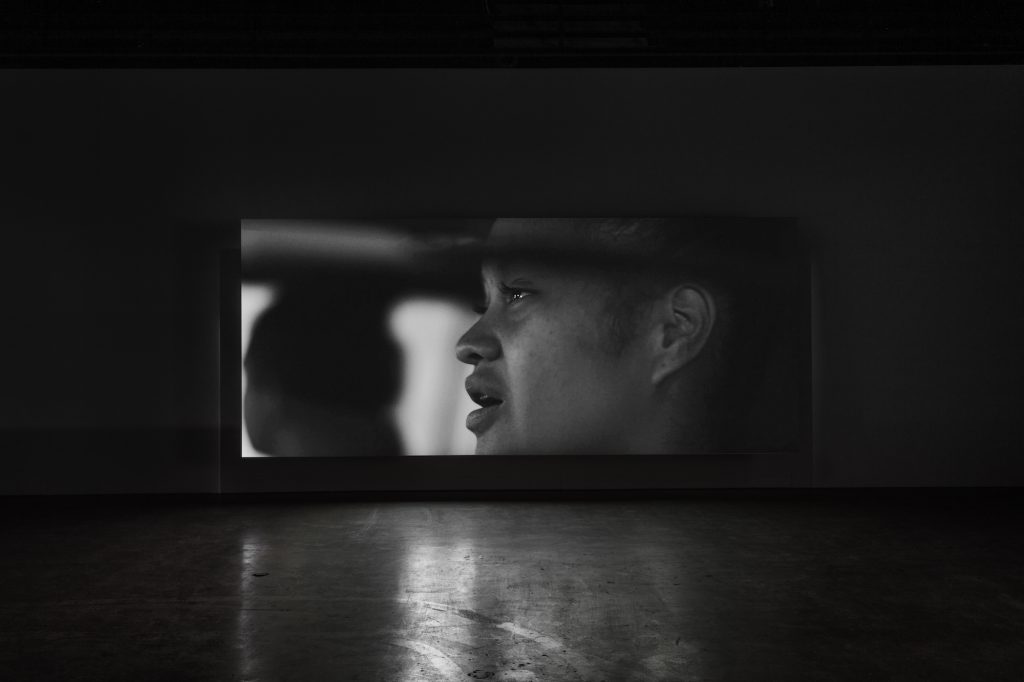
Shannon Te Ao, Ka mua, ka muri, 2020, video installation, courtesy of Oakville Galleries, photo: Laura Findlay
Shannon Te Ao, Ka mua, ka muri, 2020, video installation, courtesy of Oakville Galleries, photo: Laura Findlay

Wandering there
Wandering here is the Albatross in the sky
It is dawn
It is dawn
Daylight emerges
In this world of life
Crashing forth
To the large waves
The burgeoning waves which rest here!!!
Activating and restoring codes of expression rooted in indigenous lyrical traditions of Te Reo Māori language, Shannon Te Ao entwines voice and filmic sensibilities to create portals to generational loss and the erasure of indigenous culture by settler violence, nationalism, and ecological ruin. Te Ao embraces modes of collective authorship in his work, often through writing, composing, and translating. His practice negotiates with schemes of articulation, literary conventions, and translatability as a field of agency for trespassing the coloniality of tongues. Familial ties become elements of creative exchange, as Cameron Ah Loo-Matamua notes, “It is protocol within ceremony, or even the casual meeting, to share one’s pepeha. Pepeha serve to locate the speaker in the context of their papakāinga (direct ancestral geography) and their whakapapa (genealogy).” In this way, Te Ao’s films conceive a circular frame of relatedness with planetary elements, ancestral paths, and Māori ideas of coevolution. His brother is often involved in the filming process; his artist grandmother Makere Rangitoheriri has also been a collaborator in his work while being involved in the restorative ecology of a wetland near Lake Taupō, where she resides. The film Ka mua, ka muri (2020) involves two original Māori language waiata (songs) developed by Te Ao in collaboration with Kurt Komene (Te ātiawa, Taranaki Whānui) set to slow-moving monochromatic sequences that refer to the road trip genre of film. Portability is conditioned here through acoustic sensibilities that render the listening body prone to metabolize a unity with terrestrial and oceanic horizons. The visual language is languid yet steady like the mighty albatross, and the slow evolving arc of Te Ao’s works exhibits a definite endurance. Ka mua, ka muri alludes to a circular concept of time, as the artist reflects, “When we walk into the future, we walk into it backwards while staring at the past,” stringing together ancient evocations of transformative being and continuum.
Shannon Te Ao, Ka mua, ka muri, 2020, video installation, courtesy of Oakville Galleries, photo: Laura Findlay